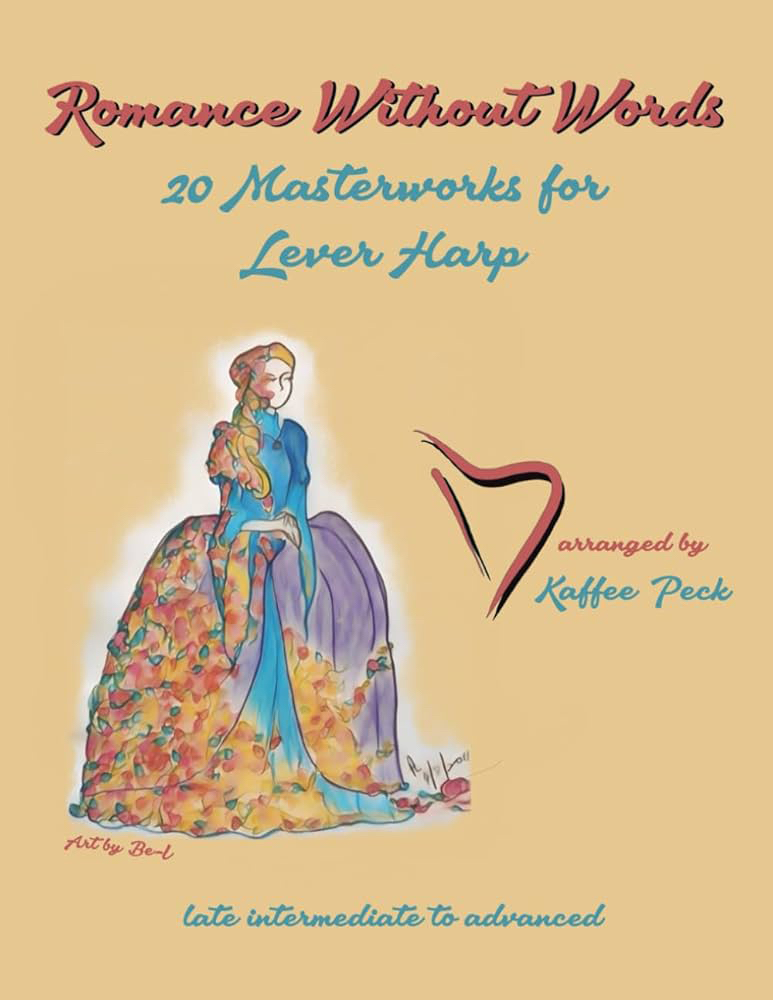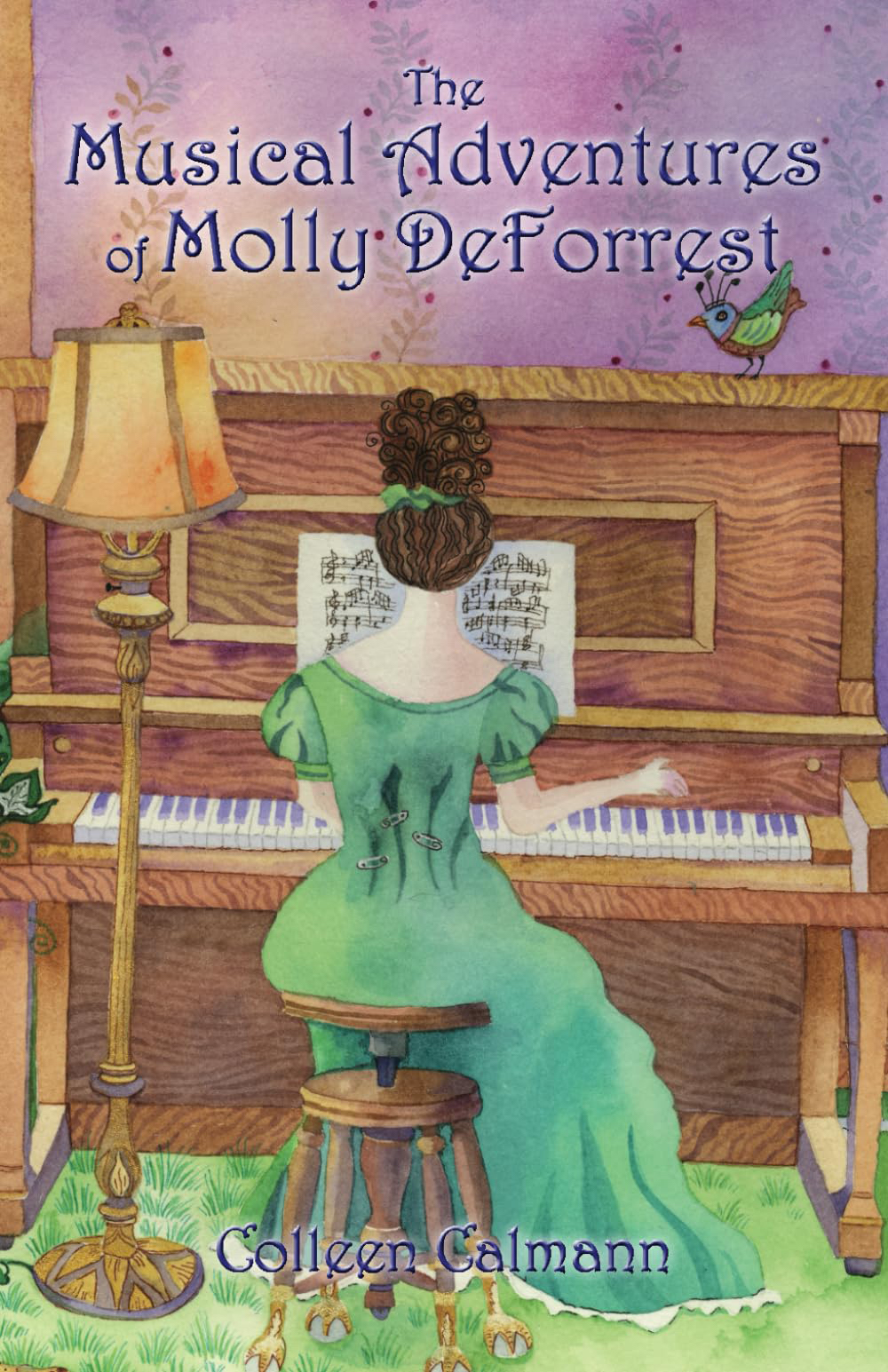


Left to right: A newly discovered work by Marcel Tournier, edited by Carl Swanson and Catherine Michel; Kaffee Peck’s Romance Without Words “fills a gap” for classical lever harp rep; and Colleen Calmann’s new novel wins a literary award.
If you’ve been following announcements in this column, you are aware that there are some newly discovered compositions by Marcel Tournier that had never been published. The latest of these is Deuxième Fantaisie de Concert (Second Concert Fantasy), and it is a real gem.
Tournier wrote this piece when he was 21 and it is in the late 19th century Romantic style that was taught at that time at the Paris Conservatory. This was before he became the harp professor at the Conservatory, but he had already earned accolades for his compositions.
This work was painstakingly edited by Carl Swanson and Catherine Michel and published by Carl Fischer. At 19 pages, it takes about eight minutes to play. You can look up Catherine Michel playing the Fantaisie on YouTube in its entirety. It’s gorgeous. For those who want a shorter piece, Swanson suggests a cut that was not in the original manuscript but which reduces the length to approximately five minutes. This piece is required repertoire for the 2026 Anne Adams Awards.
Swanson discovered a significant list of pieces by Tournier that had never been published and were not listed on any inventory of his music. He also discovered that Tournier sometimes went back to his solo pieces and added other instruments to make them chamber music. Some of these are quite unusual combinations.
This book includes a glossary of French musical terms and a copy of the original first page of the piece. There are frequent pedal charts as well as reminders of what key you are in to help you stay on track. Pedal changes are notated in the middle of the staff. There are several historical notes in the preface.
The music features fast arpeggios, triplets, a gliss, scales, harmonics, and large chords. There is only one movement, but the work has several sections of varying speed. Swanson describes the Fantaisie as a high intermediate-level, bravura piece and a significant addition to much-needed intermediate repertoire. We are indeed fortunate this music was discovered.
Kaffee Peck has arranged and published a book of classical themes for lever harp. Romance Without Words, 20 Masterworks for Lever Harp, is a collection for late intermediate to advanced players. Peck assumes the lever harp is tuned to E-flat. She uses tiny diamond-shaped notes for lever changes and most of them are highlighted in color, though a slightly larger size would be helpful. The arrangements were written using a 36-string lever harp and only two pieces require the lowest sixth-octave strings.
She includes some of the most popular classical themes such as Chopin’s Fantaisie Impromptu, Debussy’s Clair de lune, Smetana’s The Moldau, and Asturias by Albéniz. There are videos of Peck playing each arrangement on YouTube.
Fingering is suggested where it is helpful. Peck included notes on each composition and composer at the beginning of the book. The final piece, “Ave Maria (Prelude in C),” is presented three times: the first includes the melody by Gounod for violin or flute; the second is just the Bach “Prelude in C” for lever harp; the third is the Bach “Prelude in C” for a smaller lever harp an octave higher. She also includes a part for flute or violin.
Although Barbara Brundage’s arrangement of “Clair de lune” based on the Victor Coeur pedal harp transcription is still the definitive lever harp arrangement, Peck’s version is a useful abridged alternative. This book has much to offer and fills a gap for classical music themes for lever harp. These are challenging arrangements and worth the effort. They offer repertoire for the advancing lever harp player.
Have you noticed a trend that seems to be popping up in the harp community of harpists finding their way as authors? Stephanie Curcio wrote her autobiography, American Harpist. Diane Michaels wrote her charming novel, Ellen the Harpist. The latest is California harpist Colleen Calmann who has written a novel for teen or pre-teen readers called The Musical Adventures of Molly DeForrest. The heroine is not a harpist, but a harp plays a role in the story. Molly has aspirations to become a concert pianist, but gets frustrated and discouraged when the music is challenging. It is an engaging story that follows the young heroine as she uses music to find creative solutions to challenges and problems. It also highlights the influential role that teachers play in young musicians’ development. It further reminds us not to judge a book by its cover in the description of an unusual opera singer.
Not only did Calmann write the book, but she also drew the cover illustrations. If you know a young musician who also loves to read, this would be a good book to set aside for summer reading. You can do so with no fear of content, as the book recently won a Moonbeam Award bronze medal in the Best Preteen E-book category. The Moonbeam Award is a bi-annual contest for indie writers of children’s literature. The book has been selected for inclusion in the Indie California catalogue, which works with public libraries all over the state, making selected books available electronically to library patrons. It is also available on Amazon. Congratulations to Calmann on her new book and let’s hope this trend continues. •






